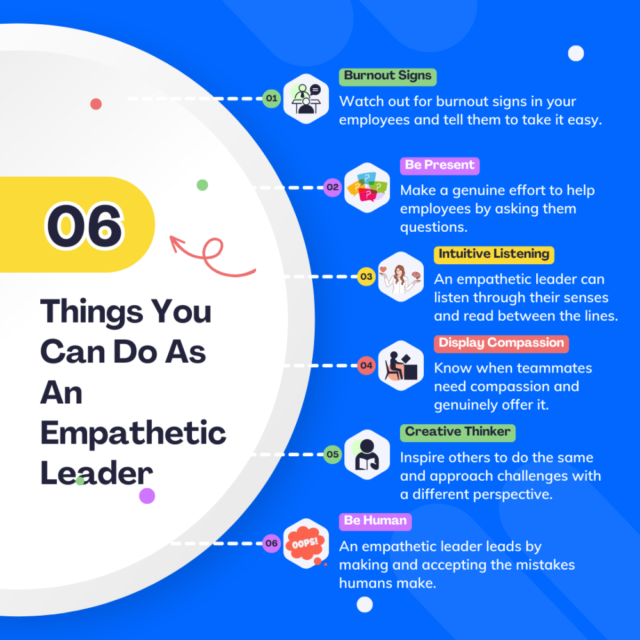In recent years, the term ‘empathy’ has gained much popularity. Especially in the workplace. Empathy – essentially a soft skill – was considered a weakness in the corporate world until some years ago.
Cut to present. A lot has changed and is changing in our corporate world.
Today, about 83% of your Gen Z employees prefer your organization for its strong, empathetic ambiance rather than better compensation.
Before we go further into the topic, let’s understand empathy in the workplace.
Empathy In The Workspace: What You Must Know
Empathy is your ability to understand and share others’ feelings. It allows you to connect with your team on a deeper emotional level. When you are empathetic, you can resolve conflicts easily, build relations with your team, and communicate with them effectively.
Empathy in the workplace builds an environment where employees are valued and understood. It is one of the significant factors in maintaining the morale of your team and improving their productivity.

Benefits of Empathy In The Workplace
Empathy is not a new term. Yet, it never got its share of recognition in the workplace.
Until a few years ago, leaders who showed empathy were considered weak with no strength of character. However, the current corporate world thrives on empathy to boost a positive work culture and retain talent.
Here are a few benefits of empathy in the workplace.
↳ It increases employee engagement. Empathy encourages stronger connections within your organization – colleagues, employees, and their team leads.
Remember: Appreciated and understood employees are more engaged and committed.
When you, as a leader, demonstrate empathy, you create a culture of trust and psychological safety, encouraging open communication and feedback without fear of judgment.
↳ It promotes teamwork and collaboration.
Empathy helps you and your employees strengthen relationships with each other and build trust. This results in better teamwork and more productivity.
↳ It boosts empathetic leadership.
Empathy helps you improve your communication and tailor it to the person you interact with. When you as a leader are empathetic, it passes down the message that being empathetic is not a burden but a strength.
↳ It creates a positive organizational culture.
When your organization prioritizes empathy, you build a more inclusive and supportive culture. This level of commitment to understanding and valuing diverse perspectives encourages open communication, and mutual respect leads to higher job satisfaction and employee retention.
↳ It strengthens your customer service.
Empathy can boost your customer service. An empathetic employee is better equipped to handle your irate customers and resolve their issues peacefully and harmoniously.
Empathetic Leaders: The Traits
Empathetic leaders connect more effectively with their team members and can create a positive working environment for their team.
The result is seen as:
– Increased productivity
– Reduced attrition rates
– Increased retention
– Cost reduction
Empathetic leaders have these inbuilt traits in them.
↳ Empathetic leaders listen with their complete attention and without interrupting the other person. They also don’t judge a person. This makes an employee feel appreciated, heard, and valued.
↳ Empathetic leaders also demonstrate self-awareness and self-control, especially during trying times.
↳ An empathetic leader knows when to withhold a conversation. They know to lead others through their fears and insecurities, they must be able to lead themselves through them.
↳ Empathetic leaders are more approachable and are easy to communicate with. This gives employees the confidence to approach the leader and communicate clearly with them.
↳ An empathetic leader knows that nobody is perfect and it is okay to make mistakes. However, one must learn from those mistakes and move ahead in life.
↳ Compassion is another trait of an empathetic leader.

↳ Empathetic leaders create a safe working environment where respect for each other, politeness, and collaborative work thrive.
↳ An empathetic leader can build trust in their employees through mutual respect and ensure that everybody is heard and appreciated in their team.
↳ Empathetic leaders enhance team morale and productivity by recognizing individual strengths and challenges.
While we have discussed the traits of an empathetic leader, let’s now see how you, as a leader, can show empathy toward your team.
How Leaders Demonstrate Empathy Toward Their Teams

In the current workplace, there is no demarcation of off hours. Employees find it difficult to switch off, as there are constant notifications on their phones.
So, as an empathetic leader, here’s what you can do to show your employees that you and they are human and need some time off.
✅ Watch out for burnout signs in your employees and tell them to take it easy.
✅ Make a genuine effort to help employees by asking them questions to help you understand them.
✅ Be an active listener and listen intuitively and attentively. An empathetic leader can listen through their senses and read between the lines.
✅ They display compassion in case of loss, whether personal or professional. An empathetic leader knows when their teammates need their compassion and genuinely offers it.
✅ An empathetic leader, with their creative thinking, inspires others also to do the same and approach challenges through a different perspective.
✅ An empathetic leader leads by making and accepting the mistakes humans make. They show that nobody is perfect; we all need to be ourselves. This will convey that perfection is a myth and that it is okay to slip and make mistakes.
When you practice these traits as a leader, your team will start considering you as an empathetic leader. The result will be increased productivity, less attrition, more retention, and more prospective employees willing to join your team.
4 Steps To Boost Empathy In Your Organization
Are you ready to boost empathy in your organization?
Yes?
Here are the four simple ways I do this within my organization.
- Encourage active listening in your organization:
When I speak with my team members, I actively listen to their concerns and challenges. I don’t hear them just to respond.
This small tweak has helped me understand unsaid words and emotions that are bothering my team members. It has helped me build a better rapport with them and resolve their problems effectively.
- Personal experiences:
Sometimes the best way to understand a problem is by sharing a personal experience or challenge.
I have often found that sharing a part of my hardship with my team encourages them to open up. This serves as motivation to them to resolve conflicts.
Remember: The best solutions often come by speaking about our experiences.
- Wellness is important:
A workplace becomes our second home over time. Creating an environment where people are comfortable sharing their problems and concerns stems from how we are as leaders.
For me empathy is not just a term, it is a given to build a better team and better organization. If a person is facing personal issues, I believe in asking them to take time off to help them recuperate.
A workplace where employee wellness is a foremost concern is a workplace where employees proactively engage and commit themselves to their jobs.
- Workshops:
Having training programs help leaders develop empathy and understand the importance of building it. As a mid-sized organization, we believe in creating in-house programs that help us become better leaders.
Empathy is important to build inclusive teams.

Empathy Is Not A Full Stop
Empathy is crucial in creating a supportive workforce. By boosting understanding, connection, and team collaboration, your organization can improve employee engagement and teamwork and promote effective leadership.
It is a silent skill, one that cannot be measured with data and metrics. The only way we can develop it is by observing people around us, recruiting people with the right mindset, and creating an inclusive workplace that is unbiased.


